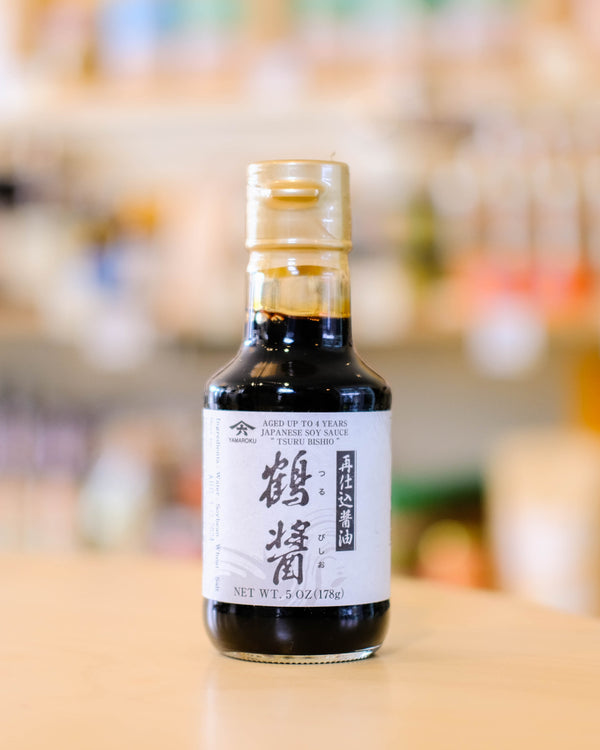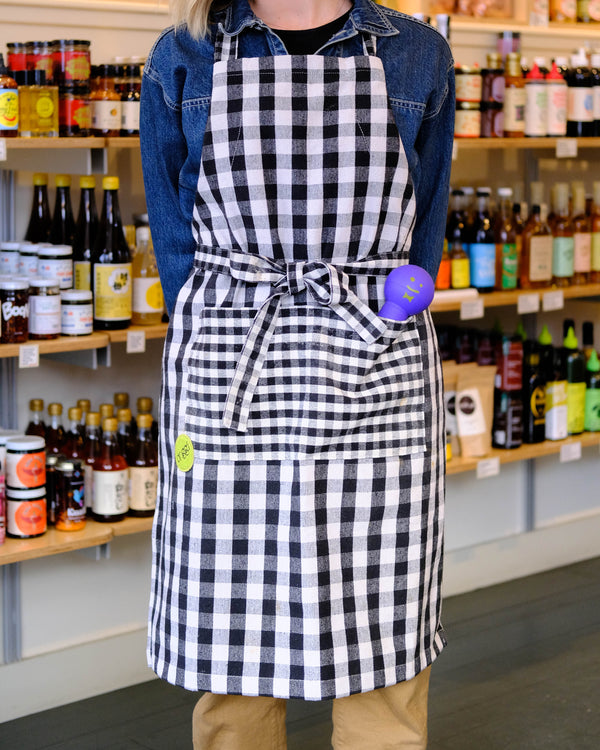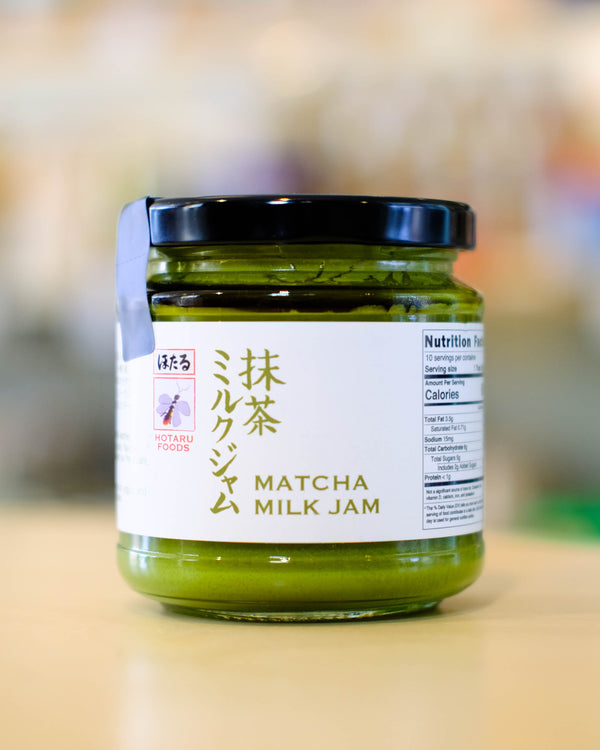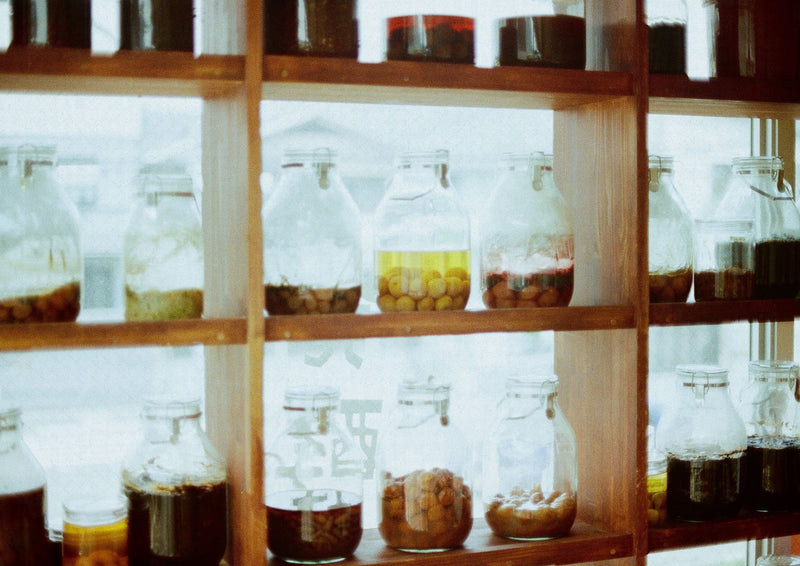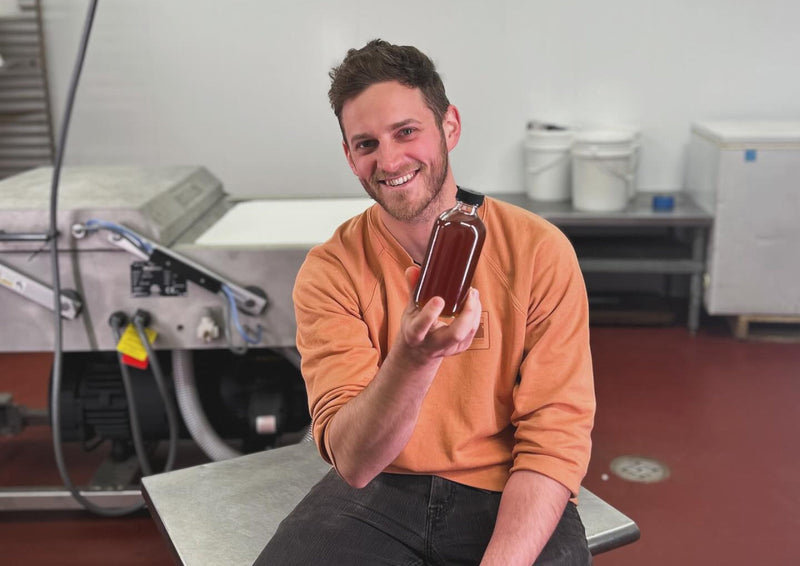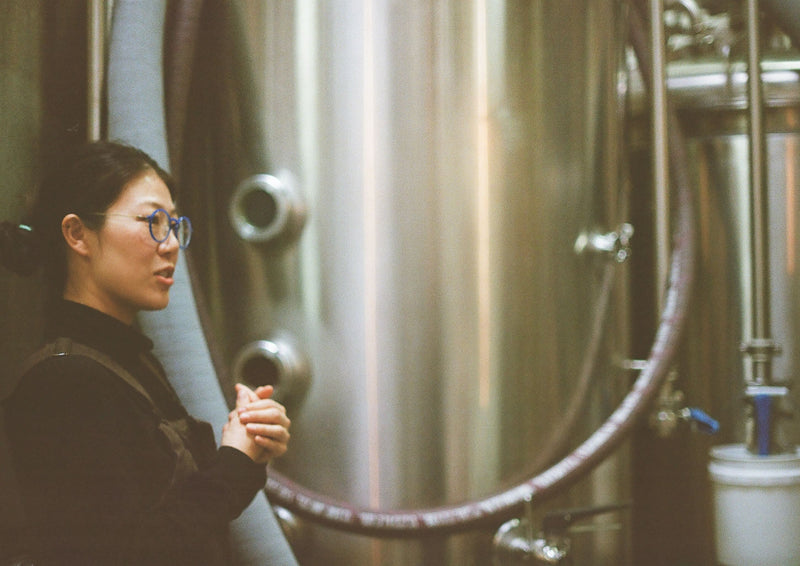“When we first started Onggi, we weren’t sure if people in Maine knew what kimjang was… so, when we held our first one that year, seeing the reception was really inspiring and fun,” Marcus Im, co-founder of Onggi tells me.
It’s a lively fall morning in the market and I’ve cornered Onggi’s founders, Amy Ng, Erin Zobitz, and Marcus Im by the register to learn more about their kimchi making experiences. Customers bustle around us, but the staff are deep in planning mode for Onggi’s fourth annual kimchi making event- also known as kimjang (pronounced GHIM-jahng) - later this week.
“The idea of kimjang is very meaningful for me. In our modern world, we’re less connected to our growing seasons, but kimjang is about celebrating those seasons, our food, and where we come from. It’s about community and coming together for food sovereignty and preservation. I’ve always loved that, and it's great to be a part of and help foster that here in Maine,” Marcus shares.
Perhaps you have visited Onggi’s annual kimjang in years past, or maybe you’re familiar with the communal kimchi making process after watching your favorite K-drama. Maybe kimjang is a long-standing family tradition passed down to you generations over, or perhaps this is your first time ever hearing of it.
In today’s global society, however, it would be challenging to find a person who has not heard of kimchi. Nowadays when referring to kimchi, lacto-fermented napa cabbage in spicy gochugaru seasoning, or baechu kimchi, is the main image that comes to mind. However, in Korea, any seasonal vegetable fermented with lactic acid and local seasonings constitutes kimchi and there are hundreds of recipes for them- with no two family’s or region’s recipes and ingredients exactly the same.
While love for kimchi may have spread around the world, not all who enjoy the ferment are familiar with its traditional production method, kimjang. For over 4,000 years, communities in Korea have been coming together at the end of the harvest season to preserve local vegetables that will sustain them through the winter.
This participatory process of making kimchi requires input from the whole community: the young, old, male, female, friend, and foe alike, and has become one of the most important cultural holidays next to Chuseok (Korean Thanksgiving) and Seollal (Lunar New Year). Kimjang is so integral to Korean culture and identity that it has been registered on UNESCO's Intangible Cultural Heritage of Humanity list since 2013.
Although kimjang traditionally takes place over a few days in late autumn, this practice of preservation is a year-long event, with the drying and salting of anchovies, shrimp, and other seafood starting in the spring. In summer, households prepare sea salt for the brine as well as dry and grind chili peppers into gochugaru powder. After, kimchi is prepared by the community in late autumn and stored underground in large earthenware crocks called onggi (hence our market’s namesake). Then, the summer’s harvest is ready to be eaten throughout the winter as it ferments slowly in cold temperatures.
Today, increasing globalization and modernization is changing the way this millennia-old practice is carried out. With most people around the world living in urban landscapes, many who practice kimjang no longer have access to the outdoor space needed to process large quantities of vegetables. Additionally, the concept of community has taken on different forms in urban cityscapes in comparison to rural countryside villages. As a result, kimjang in urban settings has adapted to take place on a much smaller scale: in one family’s house or on the roof of apartment buildings. In fact, many are refraining from participating in kimjang entirely and instead sourcing their kimchi from grocery stores due to the industrialization of global food systems and increase of convenience culture.
Conversely, in the face of climate change and the increasing risk and frequency of disasters, the need for kimjang is more pressing than ever. For many, the practices that make up a kimjang, such as preserving locally grown food alongside friends, neighbors, and family, continue to serve as a symbol of resilience for those who partake in this ancient tradition. Kimjang is a heritage that has stood the test of time, even surviving the long history of war and occupation in Korea.
Kimjang itself is a practice that builds community resilience. Through the literal preservation of vegetables in diverse recipes, communities ensure a nutritious food source throughout the winter should a disaster interrupt their daily lifeways. Additionally, historical oral knowledge of preservation practices as well as recipe transferences take place between elders and younger generations during kimjang events, preserving local identities and a sense of belonging between community members as well as the diversity of the recipes they share.
The necessity for all community members to participate in kimchi preparation and production strengthens individual relationships and community ties. As modern society becomes more individualized around the world, kimjang reinforces cultural values and practices that teach others how to work together and rely on one another. Whether it be working with the cycle of the seasons in the land around you, or with your next door neighbor (with whom you may not have seen eye to eye with in the past), kimjang emphasizes the importance of collectivism as an antidote to vulnerability that otherwise increases communal risk.
Back in a circle by the register, I ask the Onggi team about their most memorable kimjang experience.
Erin answers, “The most memorable kimjang was during Onggi’s first year in the Black Boxes. Kimjang was an idea that people weren’t too familiar with in Maine and there was so much receptivity. We were overwhelmed with people who wanted to participate and the following year we offered three back to back sessions of kimchi making based on the first year’s interest.”
Smiling, Marcus adds, “The most memorable for me was actually the year prior. It was so interesting because it was during COVID- so we actually didn’t do it in person- but online. Everyone at the time was really craving community and connection, so it was cool to have people gather online to make kimchi at home. We sent out kimchi making ingredients for everybody and they were all making it in their little Zoom sessions. It was really memorable because we were still able to have community despite what was happening in the world. I love that one.”
Amy shares, “In traditional kimjang events, the whole community comes together. Each year, it’s so nice to be able to see all of our regular customers and new faces outside of the shop using their hands and making kimchi. We’ve had some people come every year from outside of Maine specifically for the kimjang event and we make it a point to catch up on what they’ve been doing since they last visited. That’s really special.”
When I ask, “What does kimjang mean to you?” Amy replies, “Kimjang means community and a way for everyone to come together and work collectively. Community, gathering, and being able to work together is a really nice thing to have.”
We hope that you’ll join us at Onggi’s Fourth Annual Kimjang this Saturday, November 9 at 11:00am EST. As a valued member of our community here in Maine and at Onggi, please join us in carrying forward this invaluable tradition of knowledge-sharing, collaboration, and solidarity.
Works Cited:
-
Great British Chefs. “Kimjang: Korea’s Annual Celebration of Cabbages and Community.” Great British Chefs, August 8, 2024. https://www.greatbritishchefs.com/features/kimjang-cabbages-and-community. Last accessed November 3, 2024.
-
Kim, Eric. “‘If You Can Make a Salad, You Can Make Kimchi.’” The New York Times, August 22, 2022. https://www.nytimes.com/2022/08/22/dining/kimjang-make-kimchi.html. Last accessed November 3, 2024.
-
Surya, R., and Lee, A.GY. “Exploring the Philosophical Values of Kimchi and Kimjang Culture - Journal of Ethnic Foods.” BioMed Central, June 20, 2022. https://journalofethnicfoods.biomedcentral.com/articles/10.1186/s42779-022-00136-5. Last accessed November 3, 2024.
-
“UNESCO - Kimjang, Making and Sharing Kimchi in the Republic of Korea.” Intangible Cultural Heritage, 2013. https://ich.unesco.org/en/RL/kimjang-making-and-sharing-kimchi-in-the-republic-of-korea-00881. Last accessed November 3, 2024.



